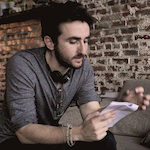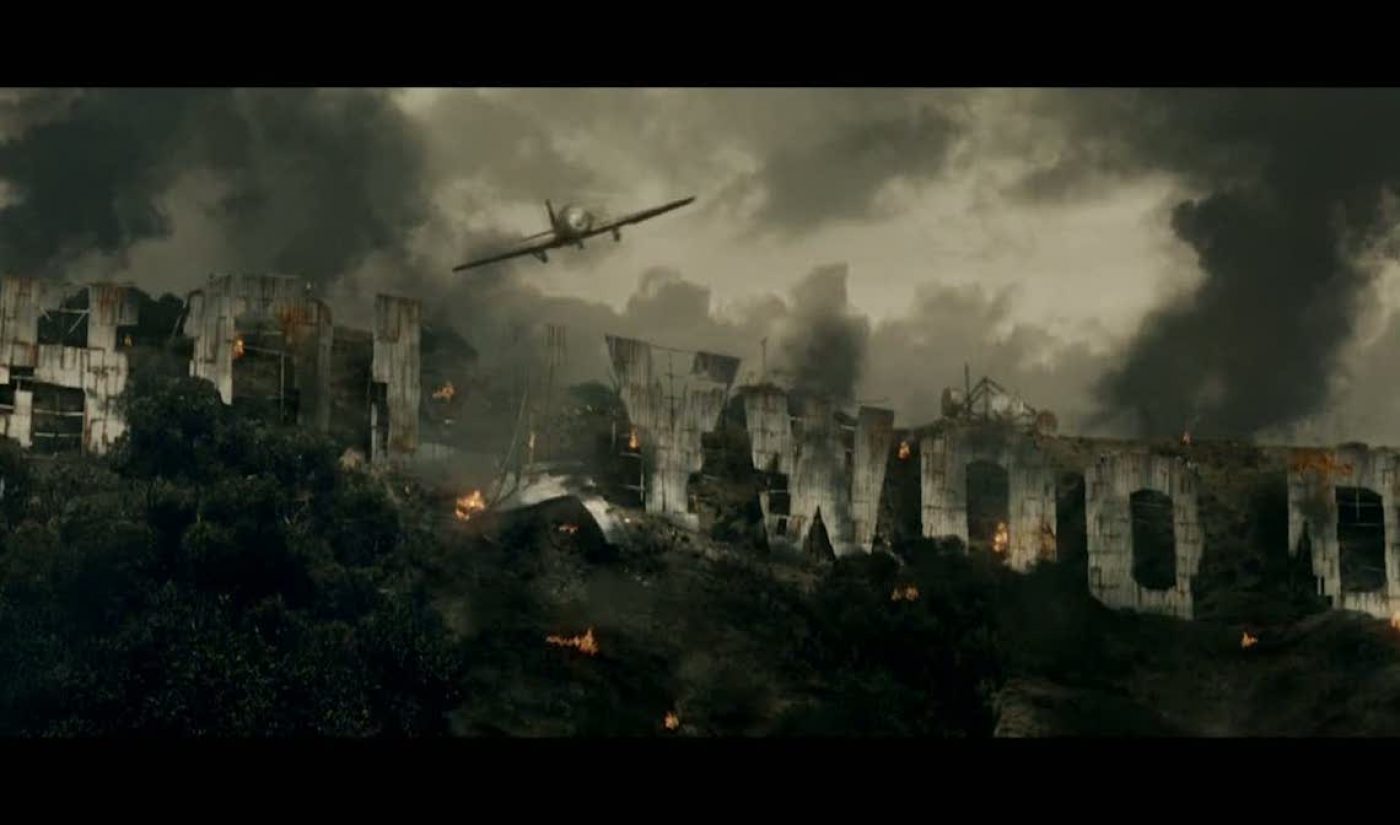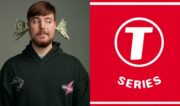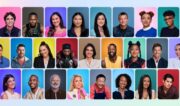I’ve been showrunning original and branded digital content since 2006. Along with my company, Happy Little Guillotine Studios, we sort-of-accidentally created one of the first digital series (called Break a Leg) in 2006 and by some combination of luck, skill and (perhaps most importantly) agility, we’ve managed to survive and thrive in the space ever since.
Strangely though, as we’re coming to the end of 2017 and I’ve been reading articles about the state of digital media, I’m finding myself with a strong sense of déjà vu – apparently, the problems in 2017 are identical to the problems of 2006 (minus President Voldemort and his merry Nazi band).
That is: Where’s the money? How do you get people to watch your series? How do you scale? How do you attract brands? It’s dying! It’s the future! It’s dying again! Now TV is dying! Now TV is the only path forward! Nope, back to digital! But how?! And why? And oh, won’t somebody please just help us?!

Subscribe for daily Tubefilter Top Stories
It’s, frankly, maddening. It’s maddening because every year leaves behind it a trail of dead companies – remember Revver? Blip.tv? Seeso? Maker Studios? Hell, this last month saw Fullscreen close their SVOD – and I’m sure there’ll be plenty more joining that list.
But it’s particularly maddening because it seems like their mistakes are obvious to anyone who has been in this industry since its inception. The creatives who’ve survived by the skin of our teeth watch as these companies fail and wonder to ourselves… how did they not see this coming?
So, I’ve decided that instead of kvetching privately over drinks or lunch or at random strangers who don’t care about anything that I say to them – I’d instead write an article on “How to Start a Successful Digital Entertainment Network” from the point of view of a digital showrunner.
Here we go…
First, The Content, Then The World
Before anything, before hiring, before planning distribution, before renting a giant office and buying a ton of ping pong tables, you’ve got to figure out the most important thing of all:
What the hell are you making?
Are you creating raw, edgy drama? Goofy comedy? Is it less genre-based and more audience-based? Is it less audience-based and more issues-driven? Is it only shows where people open packages for other people for some inexplicable reason?
Whatever it is, ask yourself: What stories do I want to tell? Not, what stories do I think people want to hear? But, what is the type of story that I want my network to be known for? Pandering will get you nowhere – passion will, so, figure that out and then, build outward from there.
Now, a few things when it comes to your content strategy that you need to take into account:
Quality, Not Packaging
Now, of course, you don’t want to just tell stories, you want to tell stories that sell. I get that. We all want people to watch what we make – not just because it brings in revenue but because, well, why else are we doing this? So, here’s one of the biggest pieces of advice I have, as someone who has been doing this for so long, he’s thinking of naming his future child Click Here to Skip This Ad — focus on quality, not packaging.
And what I mean by packaging is – stop trying to create content solely around influencers and celebrities unless they’re perfect for the role and enhance the quality of the project by being in it.
I understand that new media is a confusing place. I understand that getting views is this strange mystery that influencers have seemingly solved and digital media companies have struggled with. I understand that bringing someone with a built-in audience is a great way to hedge your bets, but… it also, very often, means creating a product that’s far worse than it should be.
Now, I’m not saying influencers aren’t talented – there are plenty that are. But shoehorning them into every project is a flawed strategy and is part of the reason so many places sputter out.
So, instead of awkwardly jimmying talent into your work, realize that influencers have been showing you how to make something successful for the last 7 years. These people aren’t famous. When they first start their channel, nobody knows who they are. There’s no bet hedging, there’s only a throwing themselves fully into whatever they’re making.
They care about developing a relationship with their audience and creating the best content they can for them.
Weirdly, we keep forgetting this lesson. I keep reading articles about how film is struggling and yet, all we keep making are remakes and super hero sequels. As if, for some reason, people won’t watch entertainment if it isn’t built on something they already know. As if people need to be convinced to love stories.
Our entire world, our culture, everything, is built on story-telling. We don’t care if the camp fire story has a famous character from another campfire story in it, we just want to see good stories.
In short, as you’re first starting up, ignore the loud screams of but how are you going to get views?! and concern yourself with a much better question:
How are you going to tell truly fantastic stories worth watching?
Not Taking Risks Is The Riskiest Of All Risks
The biggest hurdle to good content is that everyone is scared and risk-averse. And that makes sense – if your strategy doesn’t work, well, then you’re probably going to get fired. So, we do what I wrote above – hedge our bets and put the project at risk.
Here’s the thing. Risk-averse art is generally not great. And in digital, people sniff out bullshit faster than you can say, sponsored by Chevy. Audiences don’t want to see your soft, pander-ey, faux art. It’s like a corporate painting in a lobby – aesthetically okay but nobody wants to actually have it in their home.
So, consider this: Not taking risks in digital is the riskiest thing you can do. You have to leap into the deep-end and make content you really believe in and I promise you, if the quality and story-telling are there, people will watch.
An Example.
Here, I’ll give you a very fast case study from my own experience:
As a company, we’ve made a lot of content, campaigns that had hundreds of thousands of dollars put into them. Branded, originals, reality, scripted – you name it, we’ve produced it.
The most successful thing we’ve made? A Pilot called Binge. Binge is a pilot my company self-produced around a year ago. It’s a very personal story about bulimia, eating disorders and addiction – and it’s a dark comedy. My co-writer and co-creator is also the lead actress, Angela Gulner, whose story this is based on.
She’s not an influencer. She’s just a fantastic, Harvard-trained actress with a brutally honest, soul-baring and hilarious story to share. Keep that part in mind.
Since its launch, Binge has garnered over half a million views and counting – which isn’t the most views we’ve ever gotten, but, it’s the most engagement we’ve ever had. And that, in digital, is really the key. We’ve had over 20,000 likes, over 5,000 comments – people have emailed us, have volunteered to work for our crowdfunding campaign, have printed posters and peppered their cities with them – you name it.
Binge has no influencers, has no celebrities and our channel had virtually no audience before we launched the pilot.
So, what was the key to its success? I think it’s a few things: A) Targeting an audience that’s under-serviced and passionate (with over 30 million people in the United States alone with an eating disorder, it’s a huge community), B) being honest, raw and true to the vision of the series.
We never pandered, we never played it safe (in fact, we were partially sure that people would hate it and be horribly offended by the thing) and we tried to tell Angela’s story with as much honesty as we could – and people responded.
They didn’t care that they had never seen us, what they cared about is that the story spoke to them. In fact, the fans are so engaged that we’ve decided to do a crowdfunding campaign as of this past Monday and raised more than $20,000 in just over two days.
That’s the power of great content that people care about. That’s what happens when you don’t pander and tell stories that matter.
(Shameless plug, if you want to help us tell an important story and help de-stigmatize eating disorders, you can donate to the crowdfunding campaign here.)
How To Build Your Team And Not Hire 800 People
When I go to pitch meetings, I like to quietly play a game in the waiting room called, what does that person do? Generally, he or she is some kind of social media manager. What does a social media manager do? Nobody knows. They’re the liberal arts major of our time.
Oftentimes, it seems as if these digital outlets empty their wallets on giant office spaces and a million employees, creating a ton of overhead, and a desperate need to earn (in sacrifice of quality). So, then when you have a chance to take a risk or play it safe – well, you look at the hundreds of thousands of dollars on overhead and yeah, you play it safe.
And then announce you’re closing shop six months later.
So, instead of doing all that, here are a few essential positions you should start with…
CEO: I mean, this is obvious. You need a strong leader with a strong vision who can lead her team and knows the digital space like the back of her hand. If you’re following my content-first strategy, this is a person who has a clear vision, who knows what she wants the identity of the company to be and who can take all the necessary steps to build it out.
Line Producer: This is a person who has worked extensively in digital. They know union rules, they know what a fair rate looks like (in both TV and digital), they know, by looking at a script, if a budget is possible or not. This person will be hugely helpful in creating your production slate – they’ll know what you can afford and they’ll potentially have connections to the production companies that know what they’re doing and who can deliver (like MINE!).
Head of Marketing: This is preferably a person who has some contacts in the media and can quickly pick up a phone and get your project written up. They are also very familiar with how digital works and know how to be creative with each campaign. I’m not going to use the whole, “digital media is like the wild west” because that sentence is repeated so often I break out in hives when I hear it, but what they should understand is that every project can be sold to the audience differently.
Marketing in digital is truly an art, and the person who can do it should be able to know how to both work with you and the creative talent you’ve hired to develop individualized strategies for each project that helps grow the audience and maximize their potential.
Head of Development: This person has not only read a million scripts, but they’ve seen scripts produced. They love writing and understand the different between a marginal piece of work and a great piece of work. These people are solely focused on the creative and artistic side of your projects. Don’t make them tweet. Don’t make them question creators about Instagram followers. Give them the monumental task of, a. finding fantastic writers, b. helping the writers craft fantastic scripts, c. helping the director and the production team lay out their vision in the best way possible.
I cannot stress enough how important this role is. The head of development needs to know how to read scripts, they need to understand good acting, good story-telling and have a feel of the cultural zeitgeist. What stories should you be telling right now? They’ll know.
Look hard for the perfect person. They will be key to your operation.
Social Media Manager: I’m giving you some mixed signals here, right? Listen, it’s great to have a social media manager – but just like, not 200 of them. They should have experience building audiences online in every social media site. They should be able to work closely with your marketing person to adapt to each respective show and develop strategies that work for each in a way that directly interacts with fans and creates a feeling of direct connection with your audience.
This role should also ideally have some writing skills as they might be asked to mimic the voice of a character or a particular show’s writing style.
Head of Sales: Unless you’ve got a parent company with a sales team and/or you’ve already got a large budget to work with, you need a person with the rolodex who can find you money. They should be able to have some understanding of the creative and be able to sell a product like it was their own baby.
I’m sure I’m missing some positions. Obviously, you need an accountant and office manager and things like that, but those are some of the key personnel you should have because…
You Must Be Agile, Like Cats
Digital is changing monthly. Content that sold in March might not be selling anymore. Our culture, particularly now, is shifting wildly under our feet. If you’ve got 60,000 employees, having to change your strategy on a dime is impossible. You’re more like the Titanic (with the sinking and everything) then a agile fishing boat. I don’t know why I’m using boat analogies when I’ve been on like six boats, but there you have it.
My point is, keep everything as tight as you can. You don’t need a huge office. You don’t need a huge staff. If you’ve got a lot of funding, fantastic – put it on the screen. Give it to production companies who’ll make you great art. The smaller you are, the more agile you can be, the more chance you’ll have of surviving in a wildly unstable market.
This, maybe above all else, has been the secret to my companies’ success. It’s the only way we’ve managed to survive. A couple of years ago, we made primarily branded videos. Seriously, we made like 400 cat commercials. Then, we mostly made original scripted content (where we really thrive). Now, it’s a mix of both. Next year? Probably back to cats, who knows. But we managed to do this because our operation can expand and contract in a minute’s time…
…like some kind of boat.
Trust Independent Creators
So, you have a content plan, you have a staff, you have a small but adorable office and you’ve got a bucket full o’ money just waiting to be spent. What’s next?
I think it stands to reason that a lot of companies rush to hire writers or directors or producers or production companies that are top-end, high-shelf, TV-making wizards. I get the impulse. There are just three problems to this strategy:
- They’re expensive. They’re expensive as all hell. Their fees are high, their budgets are high and they’re going to blow through your capital in minutes.
- Many of them don’t know how to work in digital. Independent filmmakers know how to scrounge, how to build together a great product on less-than-TV budgets. A lot of these people cannot. So, you’re putting yourself in a situation where you might not only lose a ton of money on salaries alone, you might also get a pretty bad product.
- You’re likely not going to afford Joss Whedon. So, why take a huge monetary risk on mid-level hires when you can be the company that gives a platform to new, unique voices?
I know dozens of amazing creators, artists who have worked in the digital space and know how to make true, beautiful art within digital budgets. I also know people who work in TV who tell me things like, “I have no clue how you guys make anything in digital.”
And I’m certainly not a proponent of low budgets. I’ve always pushed for higher-quality and reasonable compensation. But it all comes back to taking risks. There’s this weird, false believe that a staff writer from some TV show or other is going to guarantee you a product that’s better than someone who has worked successfully in digital for six years and that’s silly and star-fuckery and comes back to the same idea: take risks, tell good stories, hire people who can do that based on their skill sets and their ability to work in the space you’re hiring them for.
So, when you and your company start looking for pitches or production companies – yes, maybe commit to a big splash show or two, if you can swing it. But then, bet on some of the men and women who have spent the last 10 years creating successful content in digital (hell, give them a higher end showrunner to help shepherd the project along, if you’re nervous) and be the trendsetter, not the trend-chaser.
Makin’ Dat Money Or; How The Hell Do I Distribute This Thing
So, you’ve got a slate of shows, perhaps you had the budget to make Pilots, or perhaps you’ve managed to fully complete several, or maybe you just have scripts and production companies on standby.
Here’s the 10 billion dollar question: how the hell do you make money? Where does this thing live? What now?
To me, brands are still the key for digital content. Subscription models are incredibly difficult because why would anyone want to spend 10 dollars a month on your platform when they can spend it on Hulu or Netflix or Amazon? There are known commodities and people will not take a chance on you until you’re someone they can trust with their time.
Brands, however, are spending more and more money in digital. They’re just looking for a way to get into it and many of them, from what I’ve heard in private conversations, aren’t particularly excited by working directly with influencers to hawk their products.
The fact is, and I think many of them are realizing this very quickly, but in digital, the advertisement that works is the same as the content that works: honest, high-quality story-telling.
When we made our half-branded, half-scripted series Leap Year for an insurance company, we simply targeted their audience (small business owners) and created a great show for them that never once mentioned the brand in it. After two seasons, the brand reported a 35% jump in insurance buys and quotes thanks specifically to the series.
Why? Because the audience became fans. They did not care to “skip this ad.” They just wanted to watch a show, they didn’t care who gave the money. And in return, all the press around the show included the companies’ name in it, there was some ads bought around the content, but never in it, etc. etc.
My point is, brands are hungry to invest in interesting content – and you’ve got to be able to both reach them and their ad agencies (see: Sales Person with a Rolodex) and be able to sell them on your idea for the company: a content-first digital network that will tell interesting stories that brands would be excited to be a part of.
As far as distribution goes, the world is really your oyster here. I don’t think it particularly matters if you release your show on YouTube or on some kind of specialized platform (see: Binge) – I think what’s more important is you know who your audience is going to be, you know how to target them, you know what the “story” is going to be when you reach out to press, and you know how to target your audience to alert them of the show and get them to watch.
You could screen it on MySpace for all it matters at that point – if the show is good and you know how to get it in front of people, they’ll come.
One small addendum:
Niche is Good
Don’t be scared of niche audiences. Niche audiences built the internet. People keep telling us that Binge is niche – but 30 million people in the United States have eating disorders. If half of them like the show, we’re getting American Idol numbers. My point is, digital covers billions of people – even the niche audiences are huge here, and it’s those underserviced crowds that’ll carry you on their backs to success.
In Conclusion…
I recognize that this is a simplistic view of things. I’ve left out many of the details but I’m getting close to 4,000 words and my fingers are tired.
I think the main point here is clear, though. Stop making the same mistakes over and over and over again. Stop hedging your bets. Stop chasing trends and playing it safe. Be bold. Be honest. Be interesting. That’s what we need right now – those are the stories we’re all begging to see, and whether you make them with a famous person or a straight-out-of-university-writer who has an amazing tale to tell, it doesn’t matter
What matters is here, in this space, you have to make real art and the rest will come soon after.
 Yuri Baranovsky runs Happy Little Guillotine Studios and has show-ran and directed projects in digital for over ten years, creating series and content for companies like Disney Studios, NBC Universal, USA, Machinima, Fullscreen, and many more. He’s also a little idealistic, if that wasn’t already made super clear. He totally consults, too.
Yuri Baranovsky runs Happy Little Guillotine Studios and has show-ran and directed projects in digital for over ten years, creating series and content for companies like Disney Studios, NBC Universal, USA, Machinima, Fullscreen, and many more. He’s also a little idealistic, if that wasn’t already made super clear. He totally consults, too.
Plus, seriously, check out Binge at www.bingetheseries.com.








